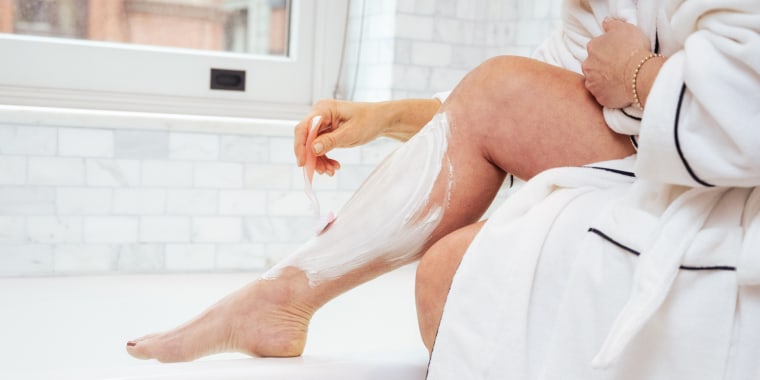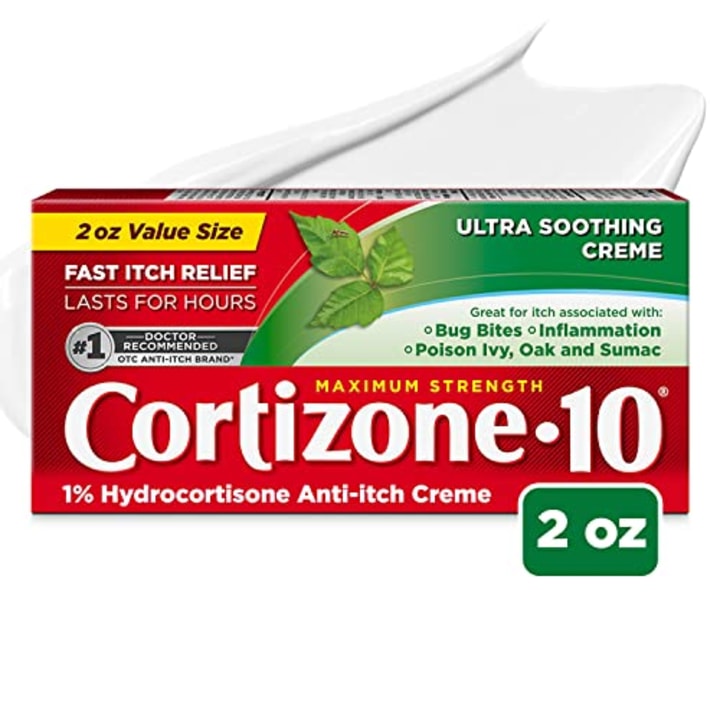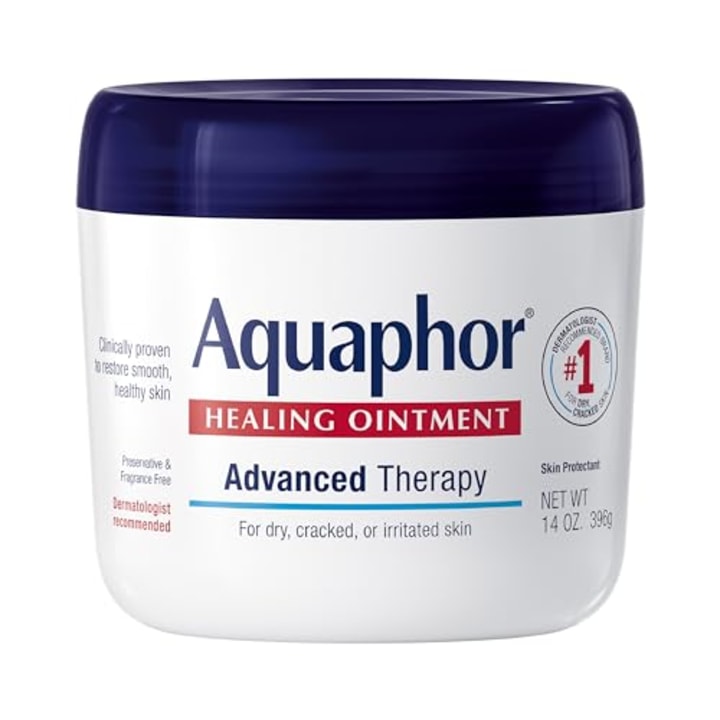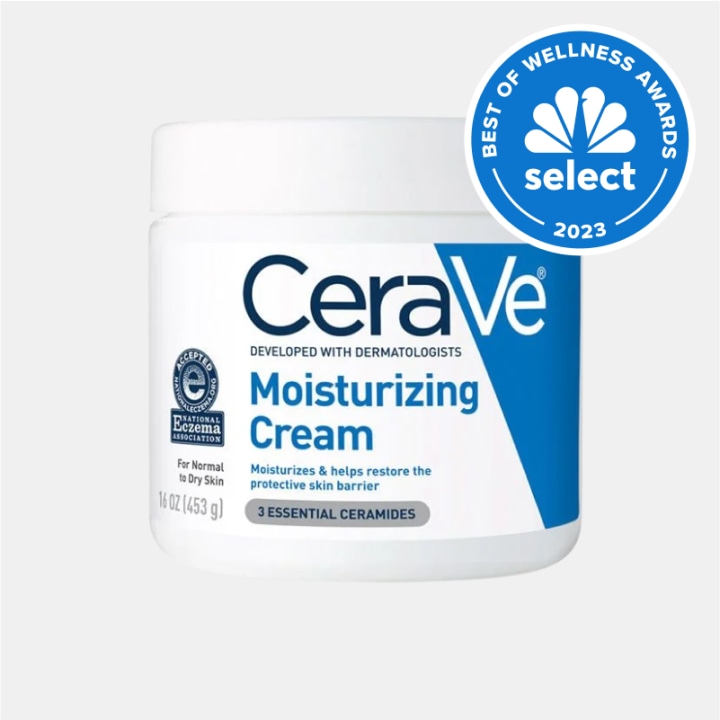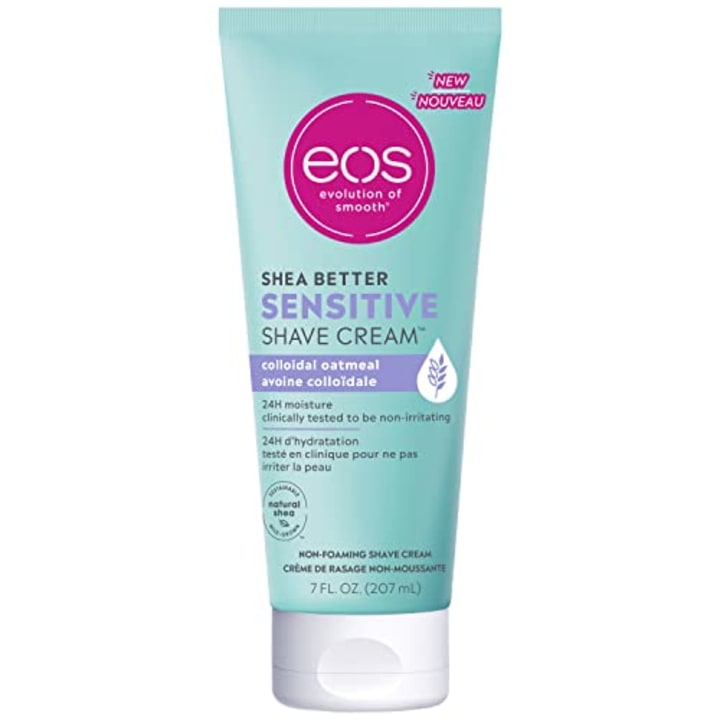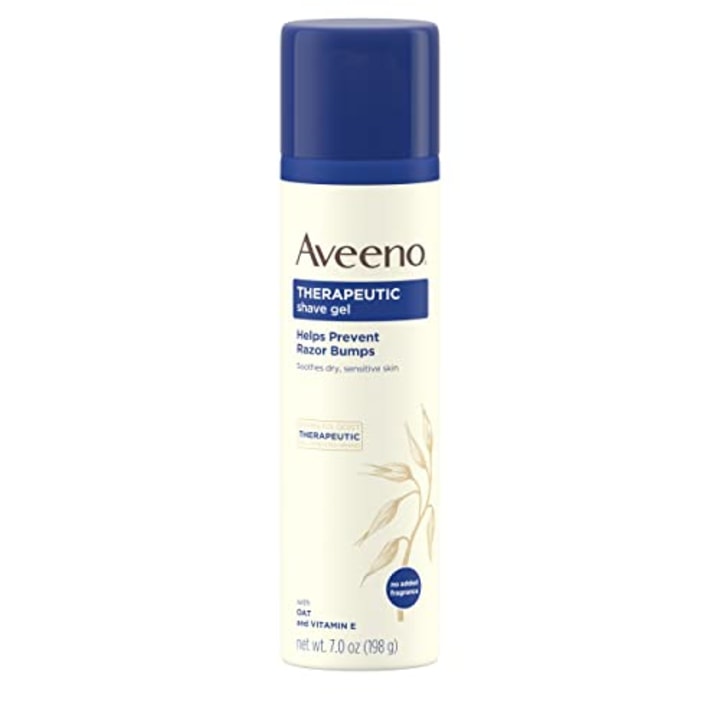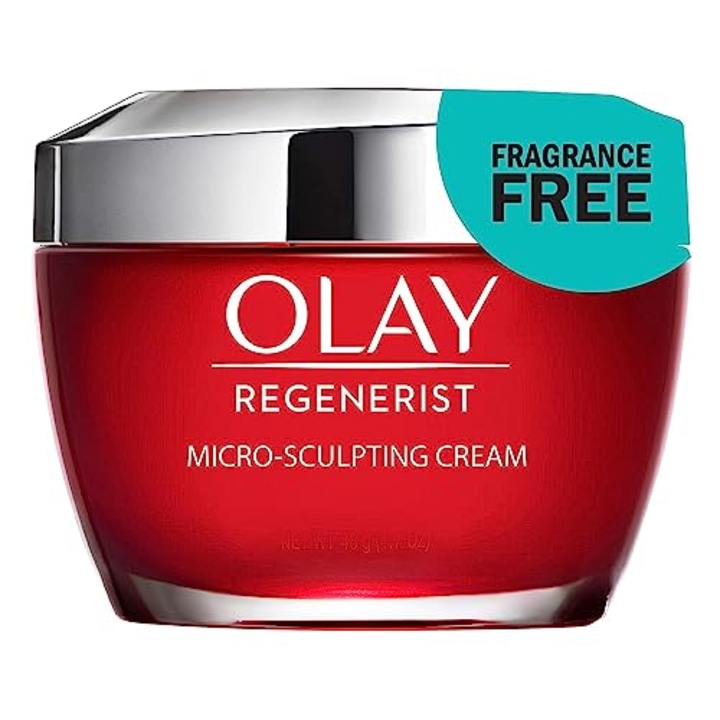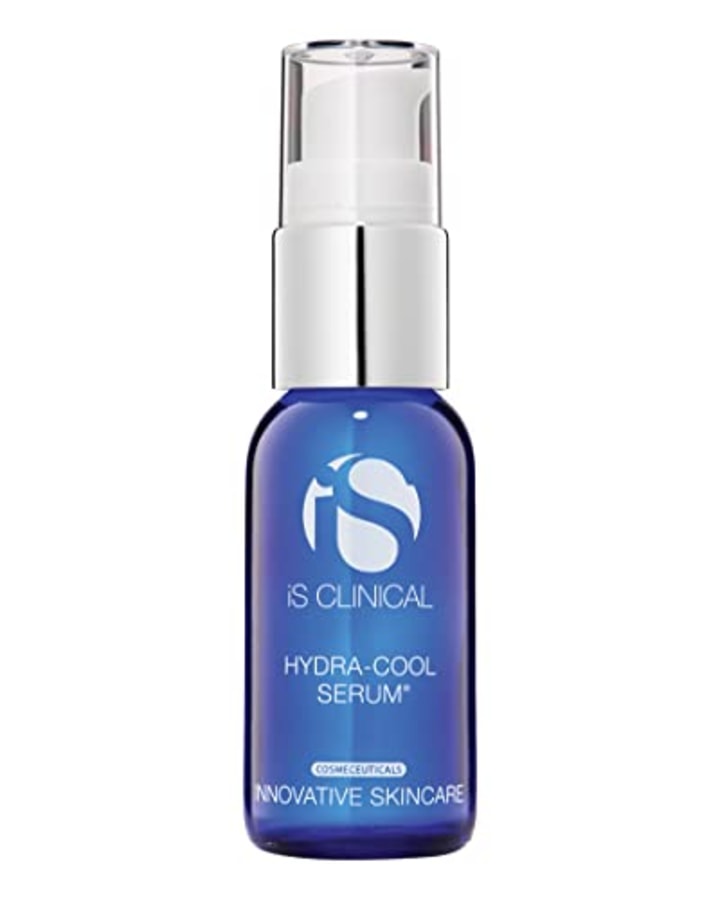The last thing you want to see after shaving is patches of red, bumpy, inflamed skin, usually known as razor burn. And while those with sensitive skin are often more prone to it, anyone practicing improper shaving techniques — like shaving with a dull razor, not using shaving cream or gel and not prepping the skin beforehand — can experience razor burn, says Dr. Hadley King, a board-certified dermatologist based in New York.
SKIP AHEAD Best razor burn treatments | Best products for preventing razor burn | What is razor burn? | What to avoid while treating razor burn
We talked to dermatologists about how to treat razor burn from manual or electric razors at home and how to know when it might be time to see a dermatologist. Experts also shared tips for how to avoid razor burn in the first place and their favorite products to do so.
Our top picks
- Best anti-itch cream for razor burn: Cortizone-10 Maximum Strength Anti-Itch Creme
- Best ointment for razor burn: Aquaphor Healing Ointment
- Best moisturizer for razor burn: CeraVe Moisturizing Cream
How we picked the best products to treat and prevent razor burn
Treating and preventing razor burn require different types of products, so what to look for when shopping depends on your end goal.
- Treating razor burn: If your skin is already irritated from shaving, prioritize moisturizing products, which can relieve itching, stinging and burning. Look for options with hydrocortisone, a soothing steroid that combats itchiness, and emollients, which are ingredients that form a film on the skin’s outer layer to lock in moisture and soften it, King says. You’ll also want to use a gentle body wash to cleanse the skin as it heals to prevent further irritation, says Dr. Robert Finney, a board-certified cosmetic dermatologist and hair loss expert based in New York City.
- Preventing razor burn: The best way to prevent razor burn is to make sure you’re using shaving cream made with emollients and a sharp, clean razor. An emollient-rich shaving cream protects and moisturizes the skin barrier, which decreases the chance of irritation and inflammation when it meets a razor’s blades. You should also moisturize after shaving to further hydrate and soften skin.
The best razor burn treatments
To recommend the below razor burn treatments, we chose products that dermatologists recommend or we’ve used ourselves and meet expert shopping guidance. Since razor burn can occur anywhere you shave, we made sure all of these products are safe to use on your face and body.
Cortizone-10 Maximum Strength Anti-Itch Creme
Cortizone-10 contains 1% hydrocortisone, which is the highest concentration allowed in over-the-counter products, according to the brand. The cream can alleviate itching for hours after application, according to the brand. It’s also multifunctional: Beyond using it on razor burn, you can use it to relieve symptoms of eczema, psoriasis, poison ivy and more, according to the brand. I’ve also applied the cream to bug bites to reduce itching. Since the product comes in a little tube, I find it easy to travel with and always make sure to throw it in my toiletry bag along with my razor.
Aquaphor Healing Ointment
Petroleum jelly is the main ingredient in Aquaphor, an ointment that forms a protective barrier on skin to help it hold onto moisture while also healing dry, cracked, irritated areas, according to the brand. Aquaphor — a product we’ve also recommended for treating dry hands, chapped lips and sunburns — comes in tubes and tubs of various sizes, and you can also purchase the fragrance-free ointment as a stick or spray. The spray is especially helpful if you’re applying it to areas like your underarms or hard-to-reach places like the back of your legs, in my experience.
CeraVe Moisturizing Cream
This moisturizer from CeraVe is a Select Wellness Award winner. You can not only use it to treat razor burn, but also to hydrate your skin post-shave and thus prevent razor burn from occurring again, experts told us. The fragrance-free cream contains hyaluronic acid, which helps skin hold onto moisture, and ceramides, which can prevent the skin barrier from drying out, according to the brand. It’s also noncomedogenic, meaning it won’t clog pores. The cream has a rich, velvety texture and it doesn’t leave behind a sticky, greasy residue, according to CeraVe.
The best products for preventing razor burn
The best way to prevent razor burn is to use shaving cream or gel, which helps the razor glide smoothly against skin and minimizes potential skin irritation, says Dr. Joshua Zeichner, the director of cosmetic and clinical research in dermatology and an associate professor of dermatology at Mount Sinai Hospital. Dry shaving (meaning shaving without water, soap, shaving cream or similar products) often leads to razor burn — if the razor has nothing to help it glide, there’s more friction between it and your skin, which could lead to a rash.
While shaving, you’re stripping away the outermost layers of skin as well as getting rid of hair, Zeichner says. Moisturizing the skin post-shave is crucial because it repairs the skin barrier so it stays soft and hydrated.
Below are expert-recommended products that can help you avoid razor burn.
Eos Shea Butter Sensitive Skin Shave Cream
This Eos shaving cream doubles as a body lotion, and after you use it with your razor, you can rub what’s leftover into skin or rinse it off. The shaving cream, which comes recommended by King, is made with moisturizing colloidal oatmeal, as well as shea butter and shea oil, both of which are emollients. It also contains aloe vera, an ingredient that soothes skin and makes it feel smooth so a razor easily glides over it, according to the brand. You can purchase the shaving cream in a fragrance-free version or in scents like vanilla, coconut, lavender and more.
Aveeno Therapeutic Shave Gel
Aveeno’s Therapeutic Shave Gel is one of Zeichner’s favorite fragrance-free options, and it’s specifically made for dry, sensitive skin, according to the brand. The shaving gel contains hydrating colloidal oatmeal and vitamin E. While the product has a gel consistency when it comes out of the pump, it thickens and becomes creamy and white once you lather it on skin, according to the brand.
Olay Regenerist Micro-Sculpting Cream
After shaving, Zeichner recommends using this cream from Olay because it contains niacinamide, a form of vitamin B3 that can soothe and strengthen the skin barrier, prepping it for the next time you shave, he says. The fragrance-free cream is also made with hyaluronic acid to hydrate the skin. Although this is technically a face moisturizer, you can apply it to other areas you shave, like your legs and underarms, Zeichner says.
iS Clinical Hydra-Cool Serum
If you find creams, moisturizers and lotions too heavy, this serum — which is one of Finney’s favorites — offers similar benefits with a more lightweight feel. It is formulated with hyaluronic acid and menthol, a chemical naturally found in mint plants that offers a cooling effect, according to the brand. These ingredients work together to repair the skin barrier, hydrate it and reduce redness after you shave, Finney says.
What is razor burn?
Razor burn is a common type of skin irritation that occurs due to shaving, says Dr. Jeremy Brauer, a board-certified dermatologist, dermatologic surgeon and founder of Spectrum Skin and Laser in New York. When you shave, the razor creates friction against the surface of your skin and the blade can cause irritation if the skin isn’t properly prepped. Razor burn usually looks like a red, swollen rash and can feel like it’s itching or burning, Brauer says. Everyone can get it, but those with dry, sensitive or acne-prone skin are more likely to experience it.
Razor burn can happen anywhere you shave, if you choose to do so (note that there’s no hygienic or medical reason to remove body or facial hair, so it’s entirely a personal preference, King says). People most commonly experience razor burn on their face, neck, legs, underarms and pubic area, experts told us.
Though everyone is different, it usually takes the skin a few days to a week to fully heal from razor burn, Brauer says. If irritation continues after a week or two and at-home treatments are not working, he recommends seeing your doctor for prescription medication.
What’s the difference between razor burn and razor bumps?
It’s important to note that razor burn and razor bumps (ingrown hairs) are not the same thing. Razor burn is a disruption of the skin barrier that happens immediately after shaving and looks like a rash, Brauer says. Ingrown hairs, on the other hand, occur when cut or removed hairs grow back into skin instead of rising above the surface, according to Zeichner. This results in little flesh-colored or red bumps showing up on skin, hence the name razor bumps.
If you have razor burn, you may be more likely to get an ingrown hair in the affected area. Since the skin is inflamed, hair may have a hard time getting through to the surface, which could result in it curling back into skin and becoming an ingrown, Zeichner says.
What to avoid while treating razor burn
First things first: Don’t shave over the irritated area while razor burn is healing, Finney says. Doing so can lead to further irritation and worsen the rash, possibly making it severe enough to need prescription-strength medication from a doctor. You should also avoid using chemical exfoliants (products that contain ingredients like alpha-hydroxy acids) and physical exfoliants (like those that have small abrasive beads) over razor burn because they can exacerbate the rash. Finally, don’t use alcohol-based products like aftershave on razor burn because they can dry out the irritated area and often sting and burn the skin, King says.
Shaving tips to help you avoid razor burn
Practicing proper shaving technique is the key to avoiding razor burn and razor bumps. We asked experts to share some of their shaving tips, which apply to any part of the body you’re shaving.
Spend about 10 minutes in warm water to soften the outer layer of skin before shaving. This makes it easier to remove hair and decreases the risk of razor burn, King says.
- Before you shave, gently exfoliate the skin with a warm, wet washcloth or a gentle moisturizing scrub like Dove Gentle Exfoliating Body Wash, which King recommends.
- Always shave in the direction that hair grows, Brauer says. Use short, light strokes and don’t increase pressure as you go. Zeichner suggests rinsing your razor every two to three strokes, too. Try your best not to shave over the same area more than once.
- After you shave, rinse your skin with cool water and pat dry. Be sure to moisturize the skin after shaving, Brauer says.
- Always shave with a sharp, clean blade and choose a quality razor, King says. If you’re shaving your legs or bikini line, look for a razor that has multiple blades and a pivoting head so it can adjust to your body’s curves, she says. She also suggests purchasing a razor with soothing strips on the blade, which help protect the skin while shaving.
Meet our experts
At Select, we work with experts who have specialized knowledge and authority based on relevant training and/or experience. We also take steps to ensure that all expert advice and recommendations are made independently and with no undisclosed financial conflicts of interest.
- Dr. Hadley King is a board-certified dermatologist based in New York.
- Dr. Robert Finney is a board-certified cosmetic dermatologist and hair loss expert based in New York City.
- Dr. Joshua Zeichner is the director of cosmetic and clinical research in dermatology and an associate professor of dermatology at Mount Sinai Hospital.
- Dr. Jeremy Brauer is a board-certified dermatologist, dermatologic surgeon and founder of Spectrum Skin and Laser in New York.
Why trust Select?
Zoe Malin is an associate updates editor who writes about health and wellness-related products like sunscreen, face masks, Covid-19 tests and more. For this article, she interviewed four experts about how to treat and prevent razor burn, as well as their favorite products for doing so.
Catch up on Select’s in-depth coverage of personal finance, tech and tools, wellness and more, and follow us on Facebook, Instagram, Twitter and TikTok to stay up to date.
